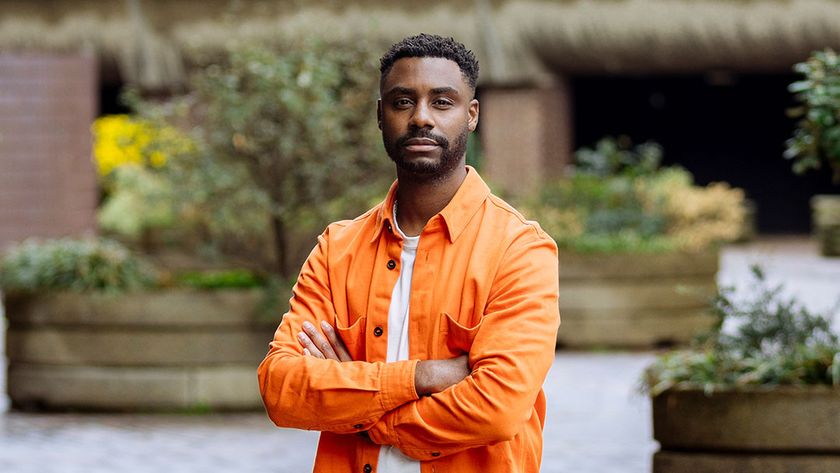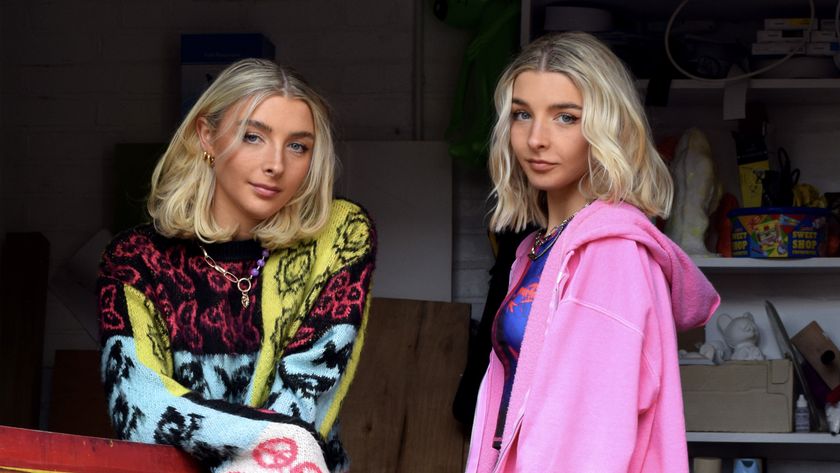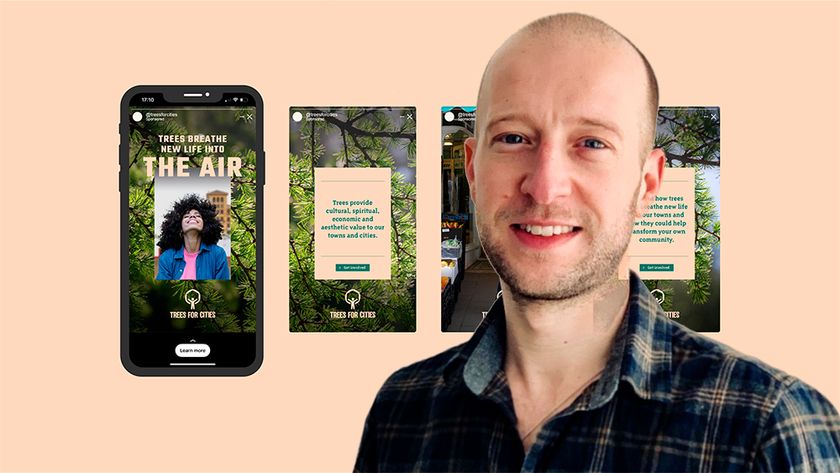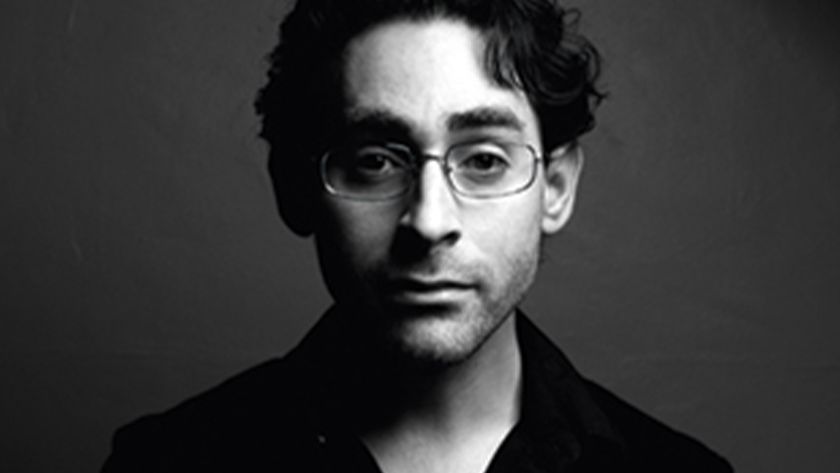How to land your dream job in 3D
Recruiters at top studios share advice to put you ahead of the pack.
You've got the talent to land a top job in 3D, but so do a lot of people. Sometimes the deciding factor in who gets the most exciting jobs isn't how great your work is, but how good you are at selling yourself.
To help you get the job of your dreams, we grilled the very people who look at your creative resumés for some tips on how to create a killer application and get your amazing 3D art in front of the right audience.
01. Look for opportunities on LinkedIn

When it comes to finding job opportunities, one thing is clear: you need to put a lot of effort into LinkedIn. Creatives at VFX studios Framestore, Jellyfish Pictures and Double Negative all mentioned it when asked how to find out about available roles, with the Jellyfish team revealing most of its applications come from LinkedIn.
The guys at Double Negative told us that, despite receiving a large volume of direct applications, it still often needs to approach people via LinkedIn if it is hiring in high numbers. If 3D is the profession you want to work in, keeping your LinkedIn profile up-to-date is vital for recruiters to be able to find you and find out when you are available to work.
Studios post vacancies and details of events they are attending on LinkedIn and other social media, so make sure you're following them. It's also worth keeping an eye on sites such as CreativeHeads, AnimatedJobs and CG Meetup.
02. Never underestimate the power of networking

Framestore gets just under half of its hires from its online application process, around 20 per cent from referrals, and the rest through either in-person or online networking, so it's vital that you learn how to network and keep in touch with the people you already know.
Studios regularly ask their employees for referrals, so just knowing someone who works at a company you're interested in could get you in the door. Go to the careers fairs and industry events so you can make contact in person, and connect with talent acquisition teams on LinkedIn.
Get the Creative Bloq Newsletter
Daily design news, reviews, how-tos and more, as picked by the editors.
03. Tailor your application
There are two key pieces of advice for putting your application together: it should be closely tailored to both the studio and the particular role in question, and you should try to find a way to make yourself stand out.
Natalie Tidey, head of talent acquisition at Double Negative, recommends finding out interesting facts about the company you're applying to, including these in your cover letter and explaining why you want to work for that company in particular. This will make you stand out from the rest: "It shows us that you've done your research, and that your application is thoughtful," she says.
For your creative resumé, 'clear, concise and focused' is the mantra to keep in mind. Unless you're just starting out, don't put everything you've ever done on there – just include your best work that is most relevant to the particular job. Recruiters have to scan a lot of CVs for key criteria, which makes them very busy people, so help them do their job; let your CV be the one that gives them just what they're looking for. You should even be tailoring your showreel to the company and role. It may be time-consuming but if you really want the job, the extra effort could make a difference.
Framestore, for example, specialises mostly in photoreal work. "A reel full of CG animation and a cover letter that doesn't talk about why you are looking to make the move into more photo-realistic work is unlikely to be successful," says Amy Smith, head of talent, film, at Framestore.
04. A stellar showreel
"Generally, when I watch reels, I am very pushed for time – the first 10 seconds counts for a lot!" says Dave Cook, CG supervisor and joint head of 3D at Jellyfish. Get the action underway quickly, put your best and most distinctive work first, and cut ruthlessly to keep the whole thing short; no longer than two minutes. If you still have a lot of work to show, make separate videos that focus on different skills.
The structure should also be tailored to the company; if the studio has a specialism, prioritise that work.
"If you don't have it, make it," says Mario Aquaro, head of rigging at AXIS. "If you want to work on a specific project style but you don't have any work experience, spend time trying to build a personal project where you can show what you can do. Sometimes, an incomplete work tells more than a final production; it gives the person watching it an idea of your potential and real aspirations."
The final consideration when selecting work for your reel is to think about how you're going to stand out from all the other applicants whose work is high quality and fitting for the role. This video showreel (above) from Allison Rutland is a great example of a tailored showreel.
"It's worth thinking about the concept of 'flair'," says Smith of Framestore. "We see a lot of reels from certain schools/training programmes that look very, very similar because everyone has worked on the same training pieces. If that is you then it's really worth thinking about how you could personalise these pieces and add your own twist to briefs you are given.
"You can also look at working on a personal piece or two outside of school if you feel your reel could do with standing out more."
05. Include a breakdown
"Always include a breakdown," says Tidey. "[Do it] either in the reel itself by providing turntables for models and showing the mesh, or layering in the lighting passes; or if this isn't possible, provide an accompanying document describing what you did on the asset or in the shot, and how you achieved it."
The breakdown is vital for showing your working process, but Cook notes that it is also important to identify which elements of a shot you actually did: "This is especially true if you have shots from big shows that will be on quite a few folks' reels."
For models, Cook likes to see a wireframe and even a UV layout; for lighting, a breakdown of passes; for rigging, a good range of motion and demonstration of any animation interface.
Aquaro recommends adding space for a text description in which you should explain your role and what you have done, keeping the text short and clear. You can provide a separate breakdown that goes into more detail.
06. Don't stress over music
Music is a debate that comes up a lot, but of the recruiters we spoke to, most said it wasn't a priority. "Don't worry about any clever edits to music," says Smith. "Personally I don't mind whether you have music or not, but I do care if you have made a music video rather than a showcase for your work. If the cuts are too short and snappy because you're trying to work with the music then we can't see what you've done, and that's just frustrating!"
Aquaro agreed that it is a secondary concern: "Watching a showreel that is well synchronised with the soundtrack sure is cool, but don't lose sight of your real goal: clearly presenting your work".
For The Sequence Group, however, the ability to synchronise your reel with compelling music is a skill it values in itself: "If you can create a pulse to your work and keep us watching beyond the first 20 seconds, that shows us you have talent beyond the content you've created," says Ian Kirby, founder and creative director.
When you've made all these tricky judgement calls and put your reel together, get someone else to look at it with fresh eyes for you, and make sure the video itself is easily accessible by putting it on a streaming site such as Vimeo or YouTube. Multiple people from each studio are going to look at it, so it should be easy to share and work on any platform.
You should also put a simple title card in the reel with your contact details so it's easy for people to get in touch if they like what they see.
07. Nail the interview
If your application and reel have done their job and got you an interview, you'll need to prepare for three key things: talking in detail about your work process, demonstrating that you're a good fit for the company, and asking thoughtful questions.
"Really prepare carefully for how you want to present your work to us and what you would like to say about each piece," says Smith. "Interviews in this industry can be very informal, which often catches people out. Informal doesn't mean that you or we shouldn't or don't care!
"All it means is that we want you to feel comfortable and not nervous and able to really talk us through the work on your reel; why you approached things the way you did, how you would do something differently next time, how you approached a challenge that came your way, and so on."

Tidey recommends finding out what you can about the company's culture and what values are important to them. "At Dneg, we value collaboration, teamwork and initiative, so ensure that you have examples of how you have demonstrated these values in the past." Your company-fit is being assessed as well as your technical and creative skill, so you need to give this some careful consideration.
Finally, you should have some questions ready to ask your interviewers: all the recruiters mentioned this, so don't leave it out. "Thoughtful questions demonstrate genuine interest in the company and the person who is interviewing you; perhaps ask them about their own experience at DNEG, and what they like about working at the company," says Tidey. On the flip side, you should also consider what not to say in an interview too.
Getting your dream job is about timing, persistence and careful preparation, so spruce up your LinkedIn, follow every company you're interested in on social media, keep in touch with your network, and get out there to attend industry events.
Once you have an opportunity in your sights, if you follow the advice we've laid out here and take care to avoid the common blunders, you'll give yourself the best possible chance of achieving your goals. Good luck.
This article originally appeared in 3D World, the world's best-selling magazine for CG artists. Subscribe to 3D World here.
Read more:

Thank you for reading 5 articles this month* Join now for unlimited access
Enjoy your first month for just £1 / $1 / €1
*Read 5 free articles per month without a subscription

Join now for unlimited access
Try first month for just £1 / $1 / €1
Tanya is a writer covering art, design, and visual effects. She has 16 years of experience as a magazine journalist and has written for numerous publications including ImagineFX, 3D World, 3D Artist, Computer Arts, net magazine, and Creative Bloq. For Creative Bloq, she mostly writes about digital art and VFX.












